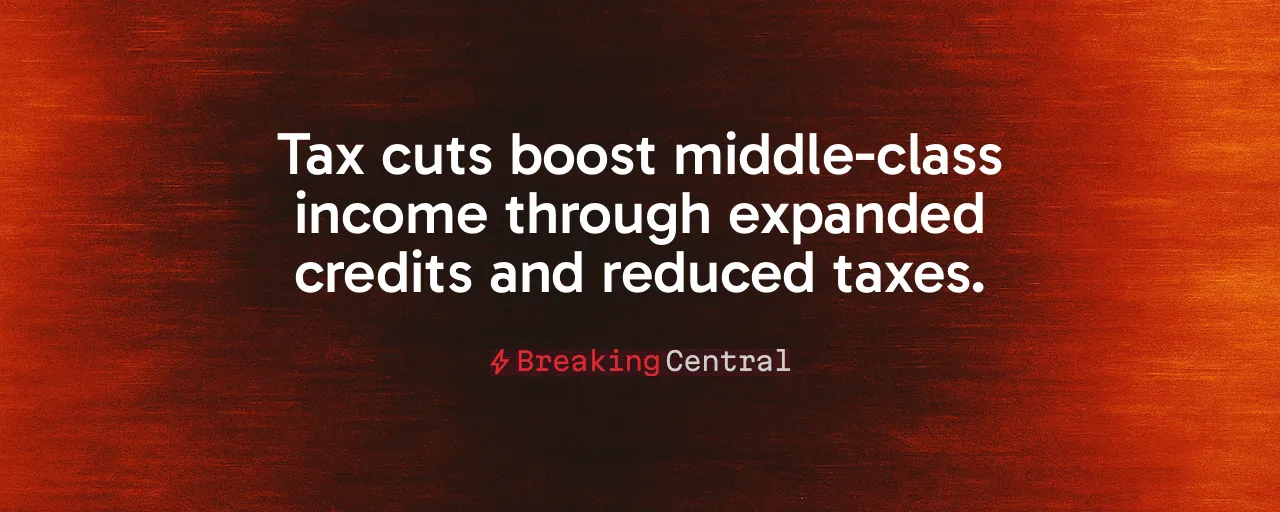A Legislative Triumph Hits the Desk
President Donald Trump stands on the cusp of a defining victory as the One Big Beautiful Bill lands on his desk, fresh from a razor-thin House vote on July 3, 2025. This 870-page package, hailed as the largest middle-class tax cut in history, bundles sweeping reforms that promise to reshape the nation's economic and security landscape. From slashing taxes on tips and overtime to fortifying the border with billions in new funding, the bill delivers on promises that resonated with millions of voters. Its scope reaches far beyond campaign rhetoric, touching everything from energy policy to Medicaid eligibility.
The bill's passage represents a significant legislative achievement for Trump's second term administration. It extends the 2017 Tax Cuts and Jobs Act, expands the Child Tax Credit, and creates savings accounts for newborns. The legislation also pumps nearly $850 billion into defense and allocates $55 billion for border wall construction and immigration enforcement. Some critics argue the bill balloons the debt. Supporters envision a blueprint for prosperity that prioritizes working families and national strength. The question now is whether this bold gamble will deliver the 'Golden Age of America' Trump envisions.
Tax Cuts to Unleash Opportunity
At the heart of the bill lies a commitment to putting more money in the pockets of everyday Americans. By eliminating federal income taxes on tips, overtime, and Social Security benefits, the legislation targets service workers, retirees, and small-business owners. The expanded Child Tax Credit and newborn savings accounts further ease the financial burdens on young families. These measures echo the 2017 tax cuts, which sparked 2.9 percent GDP growth in 2018 by boosting consumer spending and business investment.
Permanent full expensing for businesses stands out as a game-changer. Research from the Heritage Foundation suggests this policy could lift the nation's capital stock by 2 percent over the long term, driving job creation and innovation. Small businesses, in particular, stand to gain from an enhanced 23 percent passthrough deduction, freeing up cash for hiring and expansion. Opponents warn of a $4 trillion revenue hit over a decade. Supporters argue the resulting economic surge will offset costs through higher wages and tax receipts.
Securing Borders, Strengthening Defenses
National security takes center stage with the bill's robust investments. The $55 billion earmarked for border wall construction, detention facilities, and 10,000 new ICE officers signals a hardline stance on illegal immigration. Data from 2017 to 2019, cited by administration officials, shows physical barriers reduced illegal crossings in high-traffic areas. By pairing infrastructure with enforcement, the bill aims to deter unauthorized migration while streamlining deportations.
Defense spending, boosted by $850 billion, underscores a 'peace through strength' philosophy. This surge, 9 percent above 2024 levels, equips the military for emerging global challenges, from cyber threats to regional conflicts. Defense contractors are poised to benefit. The broader goal is deterrence, ensuring America's unmatched strength on the world stage. These priorities reflect a belief that a secure nation is the foundation for prosperity.
Energy and Fiscal Discipline in Focus
The bill's energy provisions aim to unleash domestic production by opening federal lands and offshore areas to fossil-fuel leasing. This move, coupled with the repeal of over 60 Green New Deal-related grants, signals a shift toward energy independence. By prioritizing oil and gas, the administration seeks to lower fuel costs and bolster rural economies. Environmental groups, however, warn of long-term climate risks. The decision builds on historical patterns, like the 1980s push for deregulation, which fueled economic growth.
Fiscal responsibility also receives attention, with some provisions drawing controversy. The bill rescinds large portions of post-2021 climate spending and tightens Medicaid eligibility, projecting savings to offset some costs. The Congressional Budget Office estimates a $3.3 trillion net debt increase over a decade, raising concerns among fiscal hawks. Proponents suggest growth-driven revenues could offset costs, referencing 1986 Reagan tax reforms as precedent despite continued academic debate about their full economic impact.
Navigating Risks and Trade-Offs
Despite its ambition, the bill carries risks. The Wharton Budget Model projects a modest 0.8 percent GDP bump in the short term, fading to 0.1 percent by 2035 as higher debt crowds out private investment. Medicaid changes, including work requirements, could reduce coverage for 17 million Americans by 2035, per CBO estimates, straining rural hospitals. States face compliance costs to implement these rules, potentially offsetting savings. These trade-offs highlight the challenge of balancing immediate relief with long-term stability.
Implementation poses another hurdle. The IRS must reprogram systems for new tax exemptions by January 2026, while the Department of Homeland Security faces pressure to rapidly scale up border operations. Legal challenges loom, particularly over immigration fee hikes and state waiver provisions. The bill's backers remain confident, pointing to the 1996 welfare reforms as proof that bold restructuring can yield lasting benefits.
A Vision for America's Future
The One Big Beautiful Bill represents a bet on growth, security, and self-reliance. By slashing taxes, strengthening borders, and prioritizing defense, it seeks to empower families and businesses while projecting strength abroad. Its energy and fiscal reforms aim to restore economic dynamism, drawing on lessons from past successes like the Reagan era. The bill delivers on promises that won over voters, from service workers to small-business owners, even as some acknowledge its imperfections.
Challenges remain, from managing debt to ensuring smooth implementation. Critics will continue to highlight its costs. Supporters see a foundation for prosperity that rewards hard work and innovation. As Trump prepares to sign the bill, the nation watches to see if this landmark legislation will spark the economic boom its architects envision or fall short under the weight of its own ambition.
Ultimately, the bill is a call to action, a reminder that bold choices shape the future. Whether it ushers in a 'Golden Age' depends on execution and economic realities. Its passage, however, proves one thing: the appetite for transformative change is alive and well. America's next chapter begins now, and the world is watching.
